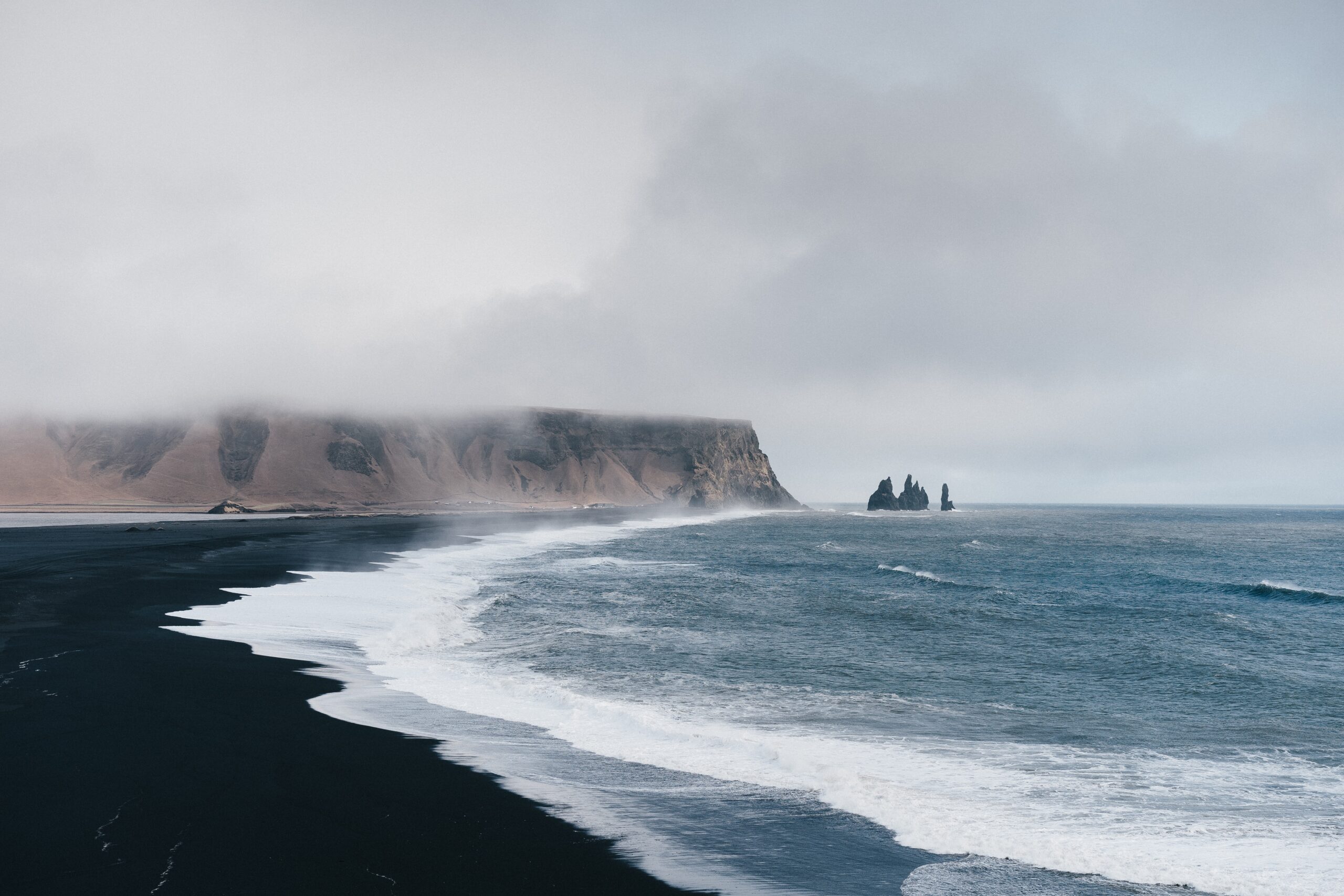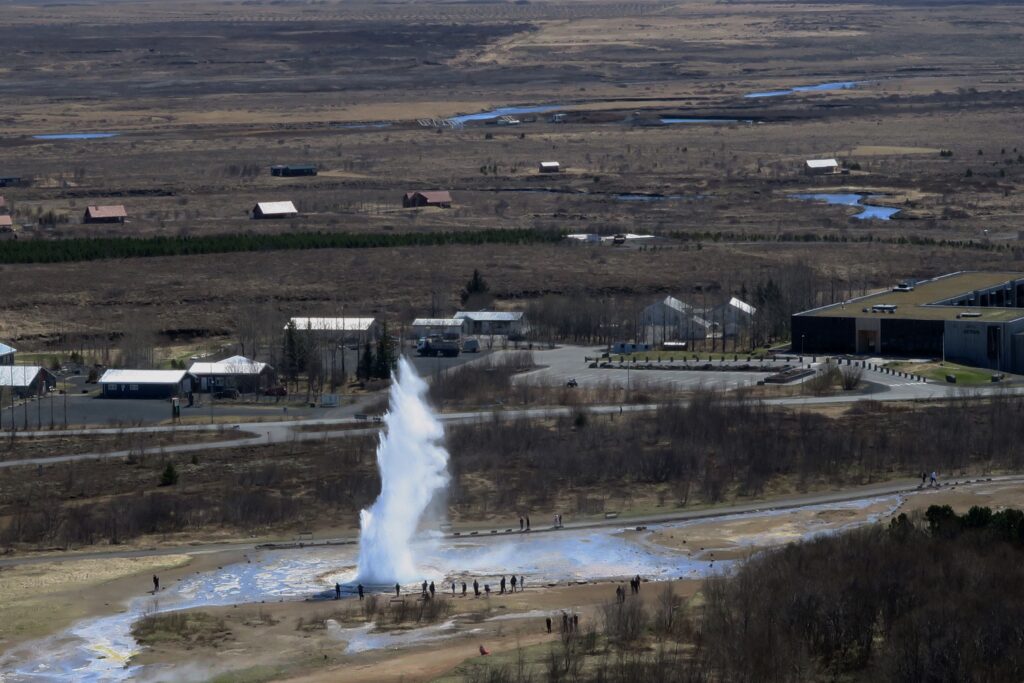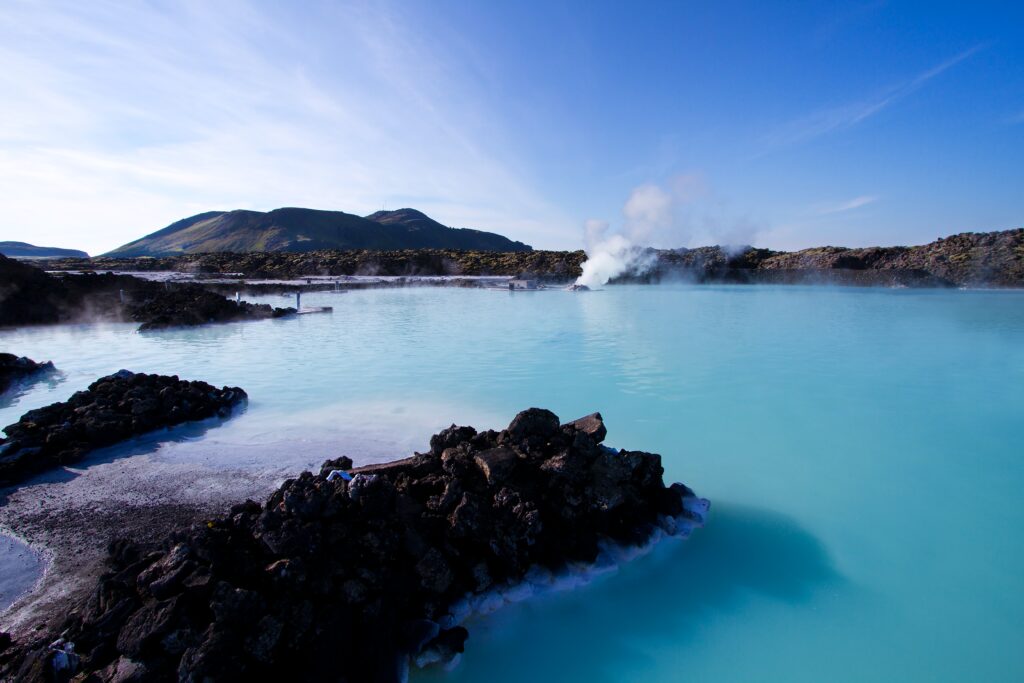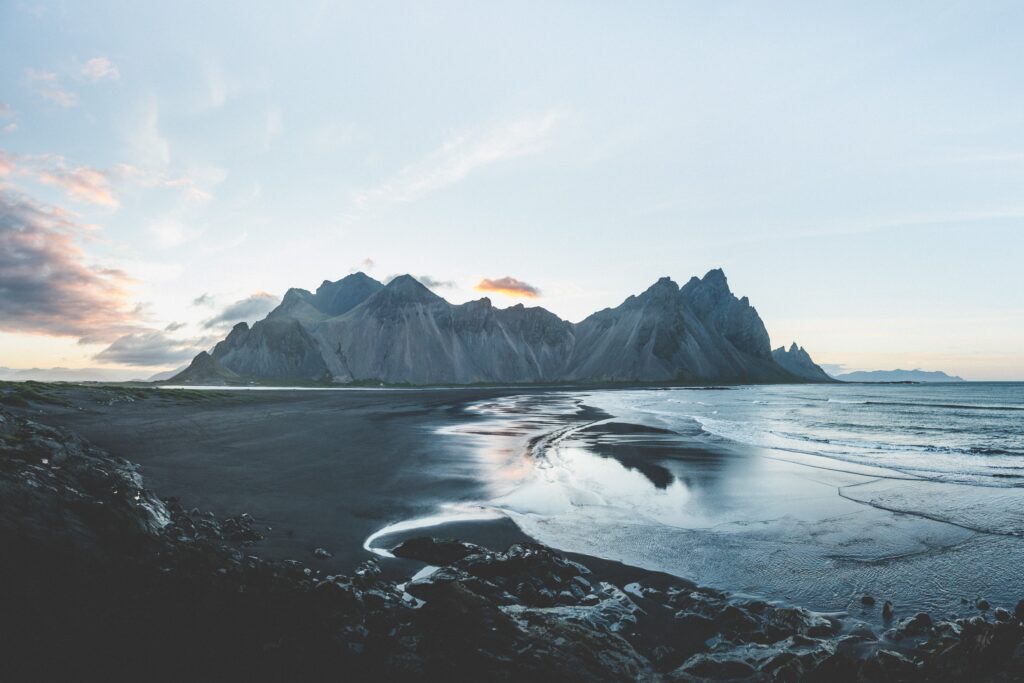Adventures in the Land of Fire and Ice: Exploring Iceland
Recently updated on January 17, 2025
Total words: 2714

Table Of Content
- Getting to Know Iceland’s Incredible Landscape
- Adventure Activities to Enjoy in Iceland
- Exploring Iceland’s Unique Culture and Cuisine
- The Best Time to Visit Iceland
- Tips for Making the Most of Your Trip to Iceland
Introduction
Welcome to Iceland – the Land of Fire and Ice! This captivating country is full of breathtaking landscapes, unique cultural experiences, and plenty of outdoor adventures. Get ready to explore this incredible destination and create memories that will last a lifetime!
Getting to Know Iceland’s Incredible Landscape
Blessed with a stunning landscape, Iceland is a dream destination for many travelers. From vast glaciers to thundering waterfalls, the “Land of Fire and Ice” offers a unique and unforgettable experience. Here’s a closer look at what makes Iceland’s landscape so special.
Glaciers
Iceland is home to some of the largest and most spectacular glaciers in Europe. Vatnajökull, also known as “The Water Glacier,” is the largest glacier in Europe, covering 8% of Iceland’s landmass. This massive glacier has several glacial tongues, including the famous Svínafellsjökull glacier which is featured in the “Game of Thrones” series. Other popular glaciers include Hofsjökull, Langjökull, and Mýrdalsjökull.
Geysers
Iceland is well known for its geothermal activity, with an abundance of geysers throughout the country. The most famous geyser is the Strokkur geyser, located in the Haukadalur Valley. The Strokkur geyser erupts every 5-8 minutes, shooting boiling water up to 30 meters in the air. Other popular geysers include the Great Geysir and the Smiður geyser.
Volcanoes
Iceland is a volcanic island, with over 30 active volcanoes. The most active volcano is the Grímsvötn volcano, which has erupted over 20 times since the 1700s. Other popular volcanoes include Hekla, the “Queen of Icelandic Volcanoes,” and the Eyjafjallajökull volcano, which famously caused an international air travel disruption in 2010.
Waterfalls
Iceland is home to some of the most majestic waterfalls in the world. The most famous waterfall is the Gullfoss (“Golden Falls”), located in the Hvítá river canyon. The multi-tiered waterfall cascades down into a deep gorge, creating a breathtaking display of nature’s power. Other popular waterfalls include the Skógafoss waterfall, the Hraunfossar waterfalls, and the Dynjandi waterfall.
Hot Springs
Thanks to the geothermal activity, Iceland boasts some of the best hot springs in the world. The most famous hot spring is the Blue Lagoon, located in the Reykjanes Peninsula. This iconic geothermal pool is filled with mineral-rich, milky-blue waters and offers a unique spa experience. Other popular hot springs include the Mývatn Nature Baths, the Kerið crater lake, and the Krauma geothermal baths.
From glaciers to hot springs, Iceland’s incredible landscape offers something for everyone. Whether you’re looking for an adrenaline-filled adventure or a relaxing getaway, this “Land of Fire and Ice” is sure to delight.

Adventure Activities to Enjoy in Iceland
Iceland is a hidden gem and a great destination for adventure lovers. Dubbed as the “Land of Fire and Ice”, this small Nordic country is blessed with amazing natural landscapes, such as the black sand of Reynisfjara and the glaciers of the Vatnajökull National Park.
From exploring the glaciers to taking a dip in the Blue Lagoon, there is something for everyone in Iceland. Here’s a list of adventure activities that you can enjoy in this amazing country.
1. Take a Dip in the Blue Lagoon
The Blue Lagoon is one of the most famous attractions in Iceland. It is a huge geothermal pool with bright blue waters. The lagoon is a great place to relax and take a dip in the warm water. The water is rich in minerals such as sulfur and silica, which are known to help with skin conditions such as psoriasis.

2. Explore the Glaciers
Iceland is home to some of the most amazing glaciers in the world. From the Svínafellsjökull glacier in the south to the Vatnajökull in the east, there are several glaciers that you can explore. With a guide, you can get close to the glaciers and observe them up close.
3. Go Hiking and Camping
Hiking and camping are some of the best ways to explore Iceland. The country is full of hiking trails, ranging from short day hikes to multi-day treks. You can also go camping in the Vatnajökull National Park, where you can sleep under the stars and admire the night sky.
4. Go Horseback Riding
Horseback riding is a great way to explore the Icelandic countryside. Many tour companies offer horseback rides through the countryside and even to some of the more remote areas. You can also go horseback riding on the beach, where you can admire the stunning views of the ocean.
5. Go Whale Watching
Iceland is one of the best places in the world for whale watching. Thousands of whales migrate to the waters around Iceland every year, including humpback whales, minke whales, and orcas. You can go whale watching with a tour company, where you will be taken out into the ocean on a boat to observe the whales in their natural habitat.
6. Try Ice Climbing
Ice climbing is one of the most thrilling activities in Iceland. You can climb up to the top of a glacier and admire the breathtaking views from above. With the help of your guide, you can explore the glaciers and even rappel down from them.
7. Go River Rafting
The rivers in Iceland are some of the most beautiful in the world. You can go river rafting on some of the more challenging rivers, such as the Hvítá River, which is known for its rapids and powerful currents.
From exploring glaciers to going river rafting, Iceland is a great destination for adventure lovers. Whether you are looking for a relaxing dip in the Blue Lagoon or an adrenaline-filled river rafting trip, there is something for everyone in this amazing country. So, pack your bags and get ready for an adventure of a lifetime in Iceland.

Exploring Iceland’s Unique Culture and Cuisine
Iceland is a beautiful country located in the North Atlantic Ocean, full of incredible natural beauty, rich history and unique culture. From its fascinating culinary scene to its vibrant and colorful festivals, Iceland is a place that never fails to entertain and excite visitors. Here are some of the ways to experience the unique culture and cuisine of this incredible land of fire and ice.
Delicious Icelandic Cuisine
Icelandic cuisine has a unique flavor, with traditional dishes like skyr, a type of yogurt, and plokkfiskur, a fish stew. Icelanders also eat a lot of seafood, such as haddock, cod, and salmon. Seafood is often served with potatoes and pickled vegetables, and is usually served with a variety of sauces. Other popular Icelandic dishes include lamb soup, pancakes, and rye bread.
Explore Traditional Festivals
Iceland has a number of exciting festivals throughout the year. The most popular festival is Þorrablót, a mid-winter feast that celebrates the Norse god Thor. The feast includes traditional Icelandic dishes such as hákarl, a type of fermented shark, and svið, boiled sheep’s head. Other popular festivals in Iceland include Íslandsmó, a horse racing festival in early June, and Þjóðhátíð, a music and dance festival in late July.
Experience Icelandic Music
Iceland has a vibrant music scene that is unique to the country. Traditional Icelandic music is often made up of acoustic guitar, violins, and drums. Popular Icelandic artists include Björk, Of Monsters and Men, and Sigur Rós. Music festivals such as Reykjavík Music Festival and Iceland Airwaves are popular attractions for visitors to experience the unique Icelandic music scene.
Visit Icelandic Museums
Iceland is home to a number of fascinating museums that highlight the country’s rich history and culture. The National Museum of Iceland is the country’s largest and most popular museum, featuring a vast collection of artifacts from the Viking Age to the present day. The Reykjavík Art Museum showcases the country’s vibrant art scene, with works from both Icelandic and international artists. Other popular museums include the Maritime Museum and the Reykjavík City Museum.
Exploring Iceland’s unique culture and cuisine is an unforgettable experience. From its delicious traditional dishes to its vibrant music scene, there is something for everyone to enjoy in this beautiful land of fire and ice.
The Best Time to Visit Iceland
Exploring Iceland is an incredible experience, with its majestic waterfalls, stunning glaciers, and incredible landscapes. But when is the best time to visit? There are several factors to consider when deciding when to visit this land of fire and ice.
Summer: June-August
The summer months are the most popular time to visit Iceland, as the days are longer and the temperatures are milder. In June and July, the midnight sun can be experienced in the northern and eastern regions, where the sun never sets. The average temperature during the summer months is around 10-13 degrees Celsius, so it’s usually quite pleasant outdoors. Plus, this is when the majority of festivals and events happen, so travelers can take part in all the fun.
Autumn: September-November
Autumn is a great time to visit Iceland, as the temperatures are still quite mild and the days are still long. The average temperature during this season is around 5-8 degrees Celsius. The crowds tend to be smaller during this time, so travelers can enjoy a more peaceful experience. Plus, this is the ideal season for outdoor activities, such as camping, hiking, and exploring the countryside.
Winter: December-February
Winter is a magical time to visit Iceland, as the country is blanketed in a layer of snow. The average temperature during this season is around 0-2 degrees Celsius, so travelers should come prepared with warm clothing. This is also the time to witness the Northern Lights, which are best seen in the northern and eastern regions of the country. Plus, winter is the best time to take advantage of all the winter activities, such as skiing, dog sledding, and snowmobiling.
Spring: March-May
Spring is an excellent time to visit Iceland, as the days get longer and the temperatures start to rise. The average temperature during this season is around 5-9 degrees Celsius, so travelers can enjoy milder temperatures and longer days. Plus, this is the perfect time for spotting wildlife, such as puffins, seals, and whales.
No matter what season you visit Iceland in, you are sure to have an incredible experience. Each season brings its own unique beauty and activities, so travelers can choose the best time to visit based on their own preferences and interests.
Tips for Making the Most of Your Trip to Iceland
Exploring Iceland is an amazing experience and there are so many incredible things to see and do. Whether you’re interested in taking a road trip, exploring the rich culture, or immersing yourself in nature, Iceland has something for everyone. To help you make the most of your trip, here are some tips for planning your itinerary and making the most of your time.
1. Start Planning Early
The best way to ensure you make the most of your time in Iceland is to start planning early. Start by researching and deciding what kinds of activities you want to do, and then figure out which locations are the best for those activities. Once you’ve got that information, you can start looking for accommodations, flights, and car rentals. Planning ahead will also help you budget your trip more effectively.
2. Bring the Right Clothing
Iceland can get cold at certain times of the year, so it’s important to make sure you bring the right clothing. Make sure you have a waterproof jacket, sturdy boots, and plenty of layers. If you’re planning on doing any outdoor activities, like hiking, it’s also important to bring the right gear.
3. Take Advantage of Tour Operators
If you’re short on time, or you’re not sure where to start with planning your itinerary, tour operators can be a great way to make the most of your trip. Tour operators can provide you with an expert guide who will help you plan your route, provide you with local tips and advice, and help you make the most of your time.
4. Visit During Off-Peak Times
Iceland is a popular destination, and it can get crowded during peak times. To make the most of your trip, consider visiting Iceland during off-peak times. This way, you’ll be able to avoid the crowds and get a more authentic experience.
5. Explore Beyond the Popular Attractions
Iceland is filled with incredible attractions, but it’s also worth exploring the lesser-known destinations. Take some time to explore the country’s small towns and villages, and discover some of the hidden gems.
6. Be Respectful of the Environment
Iceland is a stunningly beautiful country, and it’s important to be respectful of the environment. Avoid littering, stay on designated trails, and take measures to reduce your carbon footprint.
7. Don’t Forget to Enjoy Yourself
Exploring Iceland can be an amazing experience, but don’t forget to take some time to relax and enjoy yourself. Spend some time in nature, take in the breathtaking views, and soak up some of the local culture.
Making the most of your trip to Iceland is all about planning ahead and taking the time to explore the country. With the right preparation and these tips in mind, you can make sure you have an incredible and memorable experience.
Conclusion
Exploring Iceland was a truly unique and incredible experience. From the majestic Waterfalls of Gullfoss and Skogafoss, to the black sand beaches of Reynisfjara, and the hot springs of the Blue Lagoon, this country has something to offer everyone. From the scenery to the culture, Iceland is a must-visit destination. Whether it’s a weekend getaway or a longer vacation, Iceland will not disappoint. So don’t wait, go explore the Land of Fire and Ice!
1. What are the top must-visit attractions in Iceland?
When exploring Iceland, some must-visit attractions include the Blue Lagoon geothermal spa, the Golden Circle route which includes Thingvellir National Park, Geysir geothermal area, and Gullfoss waterfall, the stunning Jokulsarlon Glacier Lagoon, and the captivating Northern Lights.
2. What are the best outdoor activities to experience in Iceland?
In Iceland, you can enjoy exhilarating outdoor activities such as glacier hiking in Vatnajokull National Park, exploring ice caves in the winter months, snorkeling or diving in the crystal-clear waters of Silfra Fissure, whale watching in Husavik, and hiking to the top of volcanoes like Eyjafjallajokull.
3. What is the best time of year to visit Iceland?
The best time to visit Iceland depends on your preferences. Summer (June-August) offers long days, perfect for exploring, while winter (December-February) is ideal for witnessing the Northern Lights. Spring and fall are great for avoiding crowds and enjoying milder weather.
4. What unique cultural experiences can one have in Iceland?
While in Iceland, you can immerse yourself in unique cultural experiences such as visiting traditional turf houses in Skogar Museum, attending the Reykjavik International Film Festival, sampling local cuisine like fermented shark and skyr, and learning about Icelandic sagas at the Saga Museum.
5. What are some tips for traveling in Iceland on a budget?
To travel in Iceland on a budget, consider camping instead of hotels, cooking your meals instead of dining out, using public transportation or carpooling, taking advantage of free attractions like hot springs and hiking trails, and visiting during the shoulder seasons for better deals.